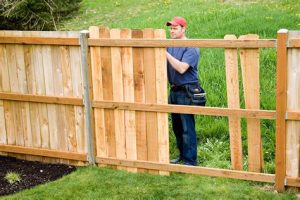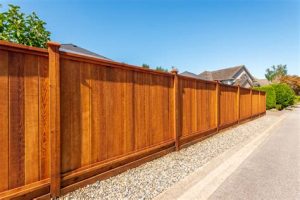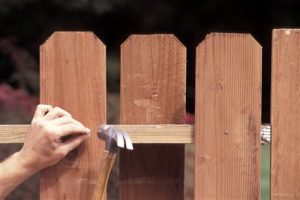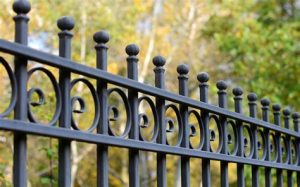Discover essential tips for navigating local zoning regulations, permit requirements, and homeowner association rules to ensure compliance when installing fencing.Installing a fence around your home can provide privacy, security, and enhance your property’s aesthetics. However, before you begin the exciting process of choosing materials and designing your new fence, it’s crucial to understand the legal landscape surrounding residential fence installations. Various factors, including local zoning regulations, homeowner association rules, and building codes, can significantly influence your project. This blog post will guide you through the essential steps of understanding and navigating these requirements, ensuring that you not only adhere to all necessary regulations but also avoid potential fines or complications. Get ready to delve into the intricacies of fence installation permits and ensure your dream fence project is both compliant and stress-free!
Understanding local zoning regulations
When it comes to installing a residential fence, one of the crucial steps is to understand local zoning regulations. These regulations dictate the types, heights, and materials that can be used in fence construction, and they can vary significantly from one municipality to another.
Before you begin your fence project, it’s essential to check with your local zoning office to obtain the specifics for your area. Failure to adhere to these regulations can lead to fines or even being required to remove the fence.
| Regulation Type | Description |
|---|---|
| Height Restrictions | Most localities set maximum height limits for residential fences. For example, front yard fences may be limited to 3-4 feet, while back yard fences can go up to 6-8 feet depending on local laws. |
| Material Guidelines | Some areas may restrict certain materials to maintain aesthetic harmony within neighborhoods, while others may have specific requirements for durable materials. |
| Setback Requirements | Many municipalities require fences to be set back a certain distance from property lines. This prevents disputes with neighbors over boundaries. |
Understanding these zoning regulations helps ensure that your fence installation process goes smoothly. It is advisable to seek guidance from local homeowners’ associations (HOAs) if applicable, as they may have additional rules that apply to your property.
In summary, knowing your local zoning regulations is an essential first step in the fence installation process. By conducting thorough research and potentially consulting with legal or professional advisors, you’ll be better equipped to navigate the complexities of local laws while enhancing your property’s value and curb appeal.
Researching permit requirements for fencing
Installing a fence around your residential property can enhance both aesthetics and security. However, researching permit requirements is a crucial step that many homeowners overlook. Each locality has its own regulations governing fencing permits, which can vary significantly.
Before beginning your project, check with your local government or zoning office for specific permit requirements. This may include adhering to height restrictions, material regulations, and placement rules to avoid disputes with neighbors or locality laws. In many cases, a simple fence does not require a permit, but it’s always best to verify.
Additionally, online resources and local building departments can provide valuable insight into the regulations applicable to your area. Be sure to inquire about potential costs and processing times associated with obtaining a permit. Understanding this process helps ensure a smooth installation and prevents potential fines down the line.
Navigating homeowner association rules
When planning a residential fence installation, it is crucial to understand the specific requirements set forth by your Homeowner Association (HOA). These regulations can vary significantly from one community to another, often dictating not only the design and height of the fence but also its material and color. Adhering to these rules will help you avoid potential disputes and fines.
Many HOAs have established a comprehensive set of guidelines that must be followed to maintain a cohesive aesthetic within the neighborhood. It is advisable to consult the HOA’s design guidelines before proceeding with your project.
| Factor | Common Requirements |
|---|---|
| Height | Usually between 4 to 6 feet |
| Material | Wood, vinyl, or wrought iron are often preferred |
| Color | Neutral or earth tones are typically mandated |
| Location | Setbacks from property lines may be required |
Before even beginning your fence installation, it’s wise to communicate with the HOA board or a representative. They can provide clarity on the specific submission process for approval and any required documentation. Depending on the HOA, certain projects might require a formal presentation during a board meeting.
Filling out permit application accurately
When it comes to installing a residential fence, one of the most crucial steps is filling out the permit application accurately. This process ensures that your project complies with local regulations and avoids potential fines or complications down the line. Attention to detail in the application can save you both time and money.
Before you begin, it’s essential to gather all the necessary documentation. This may include site plans, property surveys, and specifics about the fence itself, such as its height, material, and design. Each of these elements plays a vital role in how your application is evaluated, so be sure to provide the required information accurately and comprehensively.
Additionally, make sure to check who needs to sign the application. Sometimes, neighboring properties or the homeowner’s association (HOA) may require acknowledgment or signatures. Not adhering to these stipulations could result in your application being denied, delaying your project further. Therefore, being thorough and precise when filling out the permit application is essential for a smooth installation process.
Ensuring compliance with building codes
When it comes to installing a residential fence, compliance with building codes is crucial. Building codes are a set of regulations established by local authorities that dictate how structures and modifications should be constructed to ensure safety, health, and general welfare. Before you start the installation process, it’s essential to familiarize yourself with these codes to avoid costly mistakes or penalties.
Local building codes can vary significantly from one area to another, which makes it important to consult your local government or building department. Most communities have specific requirements regarding the height, design, and materials used for fences. Additionally, some regions may require barriers to be set back a certain distance from property lines or may have specific regulations for fences that border public spaces.
- Research local building codes: Visit your municipal website or contact your local building authority to get the most updated information.
- Review restrictions: Be aware of any restrictions that may apply, including those regarding historic districts or environmentally sensitive areas.
- Obtain necessary permits: Ensure that you acquire any required permits before commencing work to prevent fines or legal issues.
Following these guidelines will help ensure that your fence installation is safe, legal, and compliant with all building codes.
Frequently Asked Questions
What types of fences typically require a permit for installation?
Most municipalities require permits for fences that exceed a specific height, typically around 6 feet, or for those constructed from certain materials such as chain link, wood, or vinyl.
How can I find out if I need a permit for my fence installation?
You can check with your local zoning office or building department, as they can provide information on regulations and permit requirements in your area.
What happens if I install a fence without a permit?
Installing a fence without the required permit can lead to fines, removal of the fence, or other legal complications depending on local laws.
Are there specific documents I need to submit for a fence permit?
Typically, you will need to provide a site plan showing the proposed fence location, materials, and height, along with any applicable forms and fees to the relevant authority.
Is a permit necessary for repairing or replacing an existing fence?
In many cases, repairs or replacement of an existing fence do not require a permit, but it’s important to verify with your local authorities as regulations may vary.
Can homeowner associations (HOAs) enforce different rules regarding fence installation?
Yes, many HOAs have their own regulations that may be more stringent than local laws, so it’s crucial to check with your HOA before proceeding with fence installation.
Are there any exemptions to the permit requirements for fence installations?
Some areas may have exemptions, such as for decorative fences under a certain height or for temporary fencing, but these vary widely, so local regulations should always be consulted.




